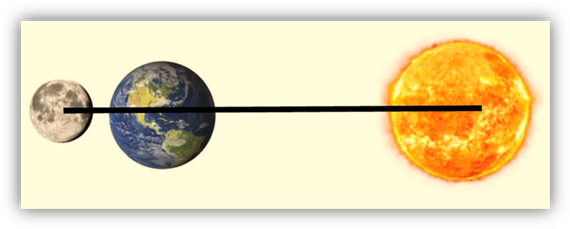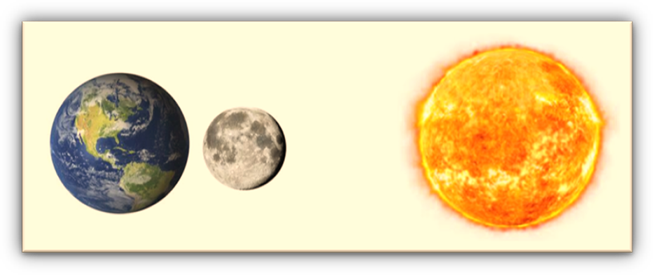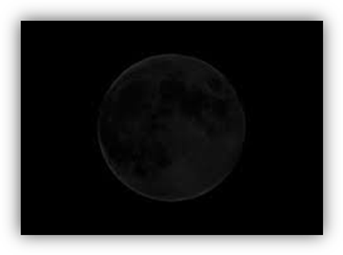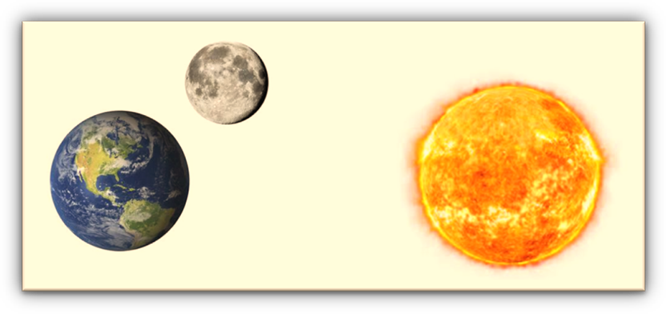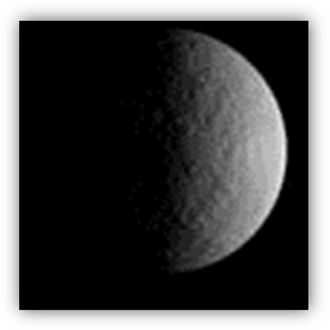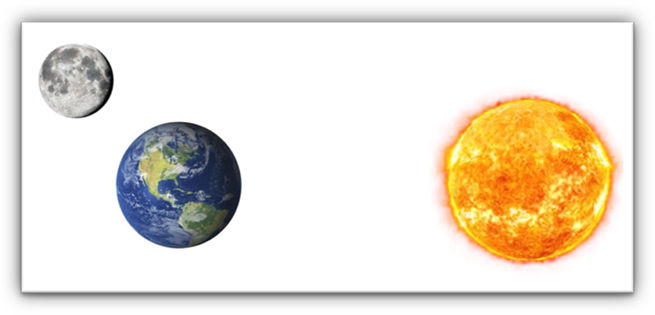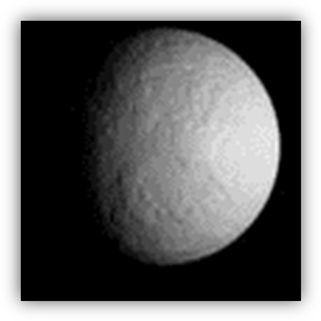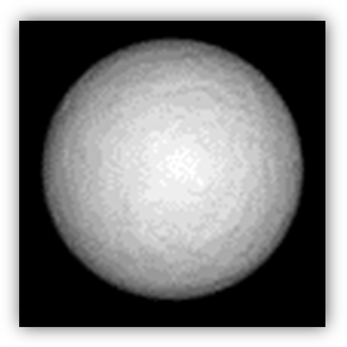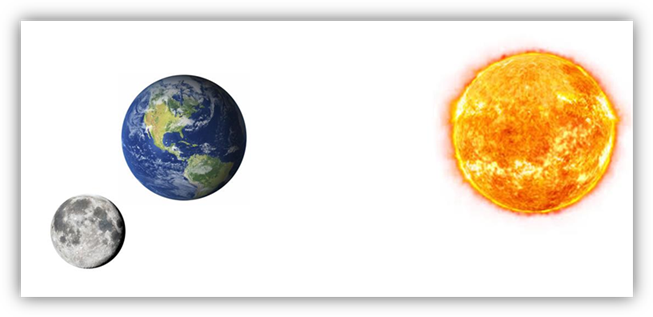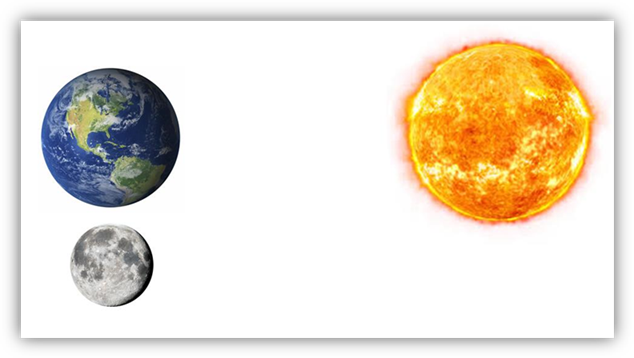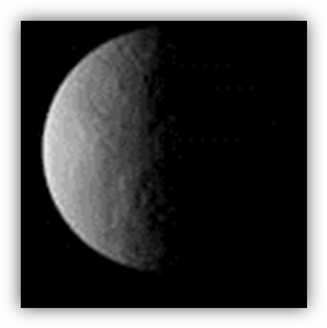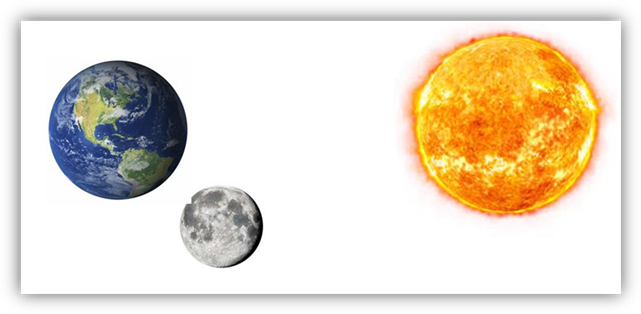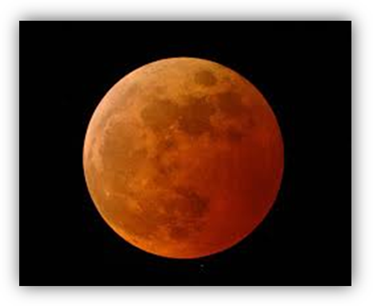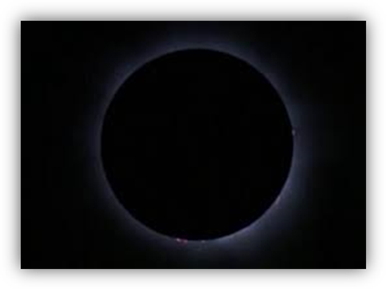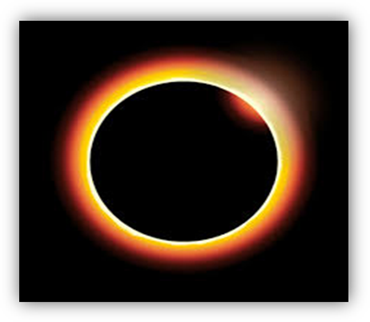EARTH’S
SPHERES AND CYCLES
Unit Overview
The
remaining units in this course focus on the earth science strand. In this unit
you will learn about the physical and chemical structure of the atmosphere, the
way gases interact with solar energy and, the way interactions (cycles) among
the atmosphere, land, and waters combine
to make the atmosphere an integral part of the global biosphere. In a natural
cycle, a substance is used over and over again in different forms as it travels
through living and nonliving things. Biogeochemical cycles are processes that
move inorganic materials such as water, nitrogen, oxygen, and carbon from the
atmosphere or soil into living organisms and back again. These inorganic materials circulate
throughout the earth’s spheres.
Earth
has a radius of some 6400 km. Ninety-nine percent of the earth's atmosphere is
contained within a layer approximately 50 km thick. Life on earth inhabits a
layer no more than 9 km thick, extending from a bare few kilometers above sea
level (airborne organisms and life on mountains) to a few kilometers below
(deep ocean basin creatures and subterranean microbial communities).
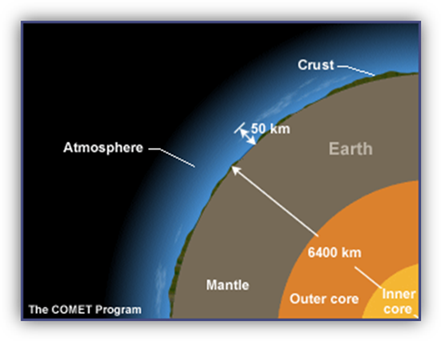
Everything
in Earth's system can be placed into one of four major subsystems: land, water,
living things, or air. These four subsystems are called "spheres." Specifically, they are
"biosphere" (living things), "atmosphere" (air),
"hydrosphere" (water), and "lithosphere" (land).
The biosphere is the portion of earth in
which all known life forms exist. It occupies a thin layer of air (atmosphere), water (hydrosphere), and land (lithosphere). The names of the four
spheres are derived from Greek words for life (bio), air (atmo),
water (hydro), and stone (litho). Interaction among
the four spheres shapes the earth’s surface, weather, and ecosystems.
Lithosphere
The
lithosphere is the solid, rocky crust covering the entire planet. This crust is
inorganic and is composed of minerals. It covers the entire surface of the
earth from the top of Mount Everest to the bottom of the Mariana Trench.

The surface of the lithosphere is very uneven (see image at right). There are high mountain ranges like the Rockies and Andes (shown in red), huge plains or flat areas like those in Texas, Iowa, and Brazil (shown in green), and deep valleys along the ocean floor (shown in blue).
If
someone were to cut through Earth to its center, these layers would be revealed
like the layers of an onion (see image above). The outermost layer of the
lithosphere consists of loose soil rich in nutrients, oxygen, and silicon.
Beneath that layer lies a very thin, solid crust of oxygen and silicon. Next is
a thick, semi-solid mantle of oxygen, silicon, iron, and magnesium. Below that
is a liquid outer core of nickel and iron. At the center of Earth is a solid
inner core of nickel and iron.
Hydrosphere
The
hydrosphere is composed of all of the water on or near the earth. This includes
the oceans, rivers, lakes, and even the moisture in the air. Ninety-seven
percent of the earth's water is in the oceans. The remaining three percent is
fresh water; three-quarters of the fresh water is solid and exists in ice
sheets.
A
small portion of the water in the hydrosphere is fresh (non-salty). This water
flows as precipitation from the atmosphere down to Earth's surface, as rivers
and streams along Earth's surface, and as groundwater beneath Earth's surface.
Most of Earth's fresh water, however, is frozen.
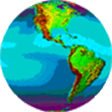 Ninety-seven percent of Earth's water is
salty. The salty water collects in deep valleys along Earth's surface. These
large collections of salty water are referred to as oceans. The image depicts
different temperatures one would find on oceans' surfaces. Water near the poles
is very cold (shown in dark purple), while water near the equator is very warm
(shown in light blue). The differences in temperature cause water to change
physical states. Extremely low temperatures like those found at the poles cause
water to freeze into a solid such as a polar icecap, a glacier, or an iceberg.
Extremely high temperatures like those found at the equator cause water to
evaporate into a gas.
Ninety-seven percent of Earth's water is
salty. The salty water collects in deep valleys along Earth's surface. These
large collections of salty water are referred to as oceans. The image depicts
different temperatures one would find on oceans' surfaces. Water near the poles
is very cold (shown in dark purple), while water near the equator is very warm
(shown in light blue). The differences in temperature cause water to change
physical states. Extremely low temperatures like those found at the poles cause
water to freeze into a solid such as a polar icecap, a glacier, or an iceberg.
Extremely high temperatures like those found at the equator cause water to
evaporate into a gas.
Biosphere
The
biosphere is composed of all living organisms. Plants, animals, and one-celled
organisms are all part of the biosphere. Most of the planet's life is found
from three meters below the ground to thirty meters above it and in the top 200
meters of the oceans and seas.
Within
the biosphere, living things form ecological communities based on the physical
surroundings of an area. These communities are referred to as biomes. Deserts,
grasslands, and tropical rainforests are three of the many types of biomes that
exist within the biosphere.

It
is impossible to detect from space each individual organism within the
biosphere. However, biomes can be seen from space. For example, the image above
distinguishes between lands covered with plants (shown in shades of green) and
those that are not (shown in brown).
Atmosphere
The
atmosphere is the body of air which surrounds our planet. Most of our atmosphere
is located close to the earth's surface where it is most dense. The air of our
planet is 79% nitrogen and just under 21% oxygen; the small amount remaining is
composed of carbon dioxide and other gasses.
The
atmosphere contains all the air in Earth's system. It extends from less than 1
m below the planet's surface to more than 10,000 km above the planet's surface.
The upper portion of the atmosphere protects the organisms of the biosphere
from the sun's ultraviolet radiation. It also absorbs and emits heat. When air
temperature in the lower portion of the sphere changes, weather occurs. As air
in the lower atmosphere is heated or cooled, it moves around the planet. The
result can be as simple as a breeze or as complex as a tornado.
Atmospheric Properties
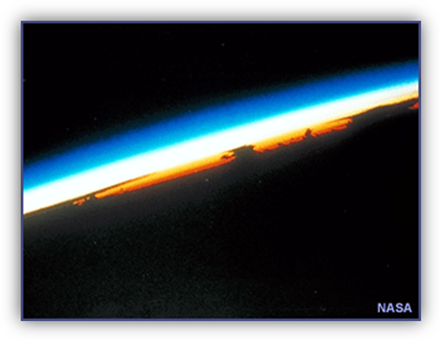
The
thin envelope of air that surrounds our planet is a mixture of gases, each with
its own physical properties. The mixture is far from evenly divided. Two
elements, nitrogen and oxygen, make up 99% of the volume of air. The other 1%
is composed of "trace" gases, the most prevalent of which is the
inert gaseous element argon. The rest of the trace gases, although present in
only minute amounts, are very important to life on earth. Two in particular,
carbon dioxide and ozone, can have a large impact on atmospheric processes.
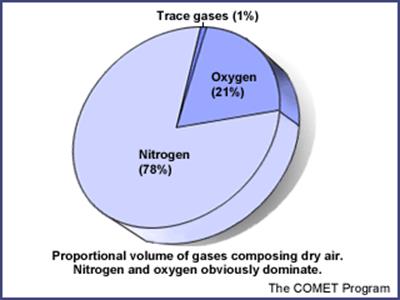
Another
gas, water vapor, also exists in small amounts. It varies in concentration from
being almost non-existent over desert regions to about 4% over the oceans.
Water vapor is important to weather production since it exists in gaseous,
liquid, and solid phases and absorbs radiant energy from the earth.
The Goldilocks Principle: Looking at
Atmospheric Gases
In
this section, you will learn about atmospheric differences among three
"sister" planets --Earth, Venus, and Mars--and get an overall
appreciation of important similarities and differences. You will use this
understanding in a later unit focusing on the greenhouse effect on earth.
Background
On
earth, two elements, nitrogen (N2) and oxygen (O2), make
up almost 99% of the volume of clean, dry air. Most of the remaining 1% is
accounted for by the inert gaseous element, argon (Ar).
Argon and the tiny percentage of remaining gases are referred to as trace
gases. Certain trace atmospheric gases help to heat up our planet because they
appear transparent to incoming visible (shortwave) light but act as a barrier
to outgoing infrared (long wave) radiation. These special trace gases are often
referred to as "greenhouse gases" because a scientist in the early
19th century suggested that they function much like the glass plates found on a
greenhouse used for growing plants.
The
earth's atmosphere is composed of gases (for example, CO2 and CH4)
of just the right types and in just the right amounts to warm the earth to
temperatures suitable for life. The effect of the atmosphere to trap heat is
the true "greenhouse effect."
We
can evaluate the effect of greenhouse gases by comparing Earth with its nearest
planetary neighbors, Venus and Mars. These planets either have too much
greenhouse effect or too little to be able to sustain life as we know it. The
differences between the three planets have been termed the "Goldilocks Principle." Venus is
too hot, Mars is too cold, but Earth is just right.
Mars
and Venus have essentially the same types and percentages of gases in their
atmosphere. However, they have very different atmospheric densities.
●
Venus has an extremely
dense atmosphere, so the concentration of
is responsible for a "runaway" greenhouse effect and a very
high surface temperature.
●
Mars has almost no
atmosphere; therefore, the amount of is
not sufficient to supply a warming effect, and the surface temperatures of Mars
are very low.
●
Mars is much
further away from the Sun than is Venus.
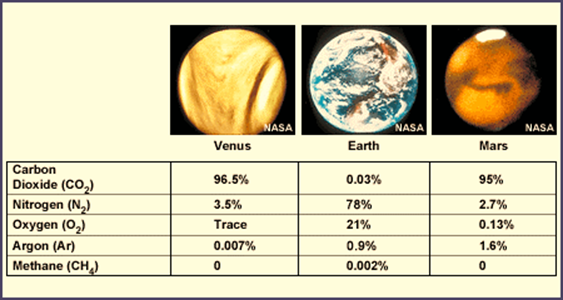
Earth
has a very different type of atmosphere. Our atmosphere has much less than Venus or Mars, and our atmospheric
pressure is close to midway between the two (1/90 that of Venus and 100 times
that of Mars).
Many
scientists believe the composition of our atmosphere is due to the presence of
life. Life acts to keep Earth's atmosphere in a dynamic balance. In other
words, if life were to completely disappear, eventually our atmospheric
composition could come closely to resemble Mars or Venus. Only with life
continually producing oxygen through photosynthesis and removing and
re-circulating does Earth's atmosphere
remain fairly stable.
Cycles
Just
as we earthly organisms require a source of energy, water, and the chemical components
of our bodies, so does the entire global biosphere. These services are provided
to the biosphere by global energy and chemical cycles.
Most
people are familiar with the concepts of cycles—that certain substances move
endlessly throughout the earth's biosphere, hydrosphere, atmosphere, and
lithosphere, existing in different forms and being used by different organisms
at different times, but always moving, always circulating. You are probably
familiar with the water cycle. Water, in its different forms, cycles
continuously through the lithosphere, hydrosphere, atmosphere, and biosphere.
Water evaporates into the atmosphere from the land and the sea. Plants and
animals use and reuse water and release water vapor into the air. Once in the
air, water vapor circulates and can condense to form clouds and precipitation,
which fall back to earth. At one time or another, all of the water molecules on
earth have been in an ocean, a river, a plant, an animal, a cloud, a raindrop,
a snowflake, or a glacier!
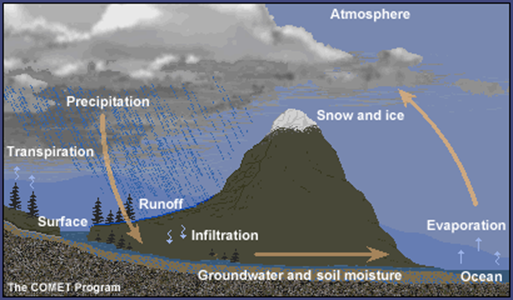
In addition to water,
many other substances such as nitrogen,
oxygen, and carbon cycle throughout the earth and atmosphere. These cycles are
important to individual animals and plants and even to entire ecosystems. But
we're less familiar with the notion that these cycles fundamentally influence
the planet as a whole, dramatically and unmistakably altering the earth's
atmosphere. When you think about it, this influence only makes sense. The
atmosphere is the greatest, fastest, and most reliable global transport system
we have.
Inject almost any stable gaseous material into the
atmosphere and before long it is spread worldwide. For example, the graphic
below shows how the smoke and ash plume from the eruption of Mt. Spurr in Alaska spread and moved over a 4-day period, as
detected by satellite imagery. During that time, the original plume was carried
rapidly eastward from Alaska and spread over an area many times its original
size.
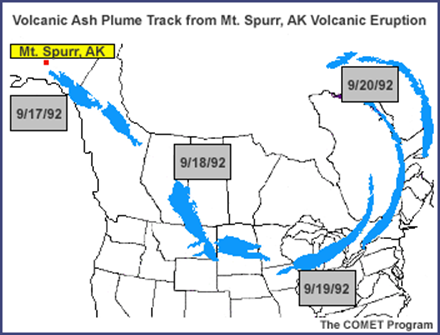
Because
cycles require the movement of substances, what better conveyor belt to use
than the atmosphere? To explain what we mean, let's look at several important
components of the earth's atmosphere and see how they are influenced by these
cycles.
Nitrogen comprises the bulk of the
atmosphere (approximately 78%). Nitrogen cycles slowly throughout the earth's
system. To most of the biosphere, nitrogen in the atmosphere is like the ocean
to a thirsty person—amazingly abundant but not quite in the right chemical
form. A molecule of nitrogen gas is made up of 2 atoms very tightly bound
together. It takes tremendous amounts of energy, such as produced by lightning
or fires, to break the bond. Amazingly, an assortment of bacterial species that
specialize in taking nitrogen from the air can also convert nitrogen into
different usable forms. These bacteria also release nitrogen from organic
material back into the atmosphere. Nitrogen is the one element found almost
entirely in the atmosphere—there's very little on land or in the sea. Nitrogen
is essential to life, a key element in proteins and DNA.
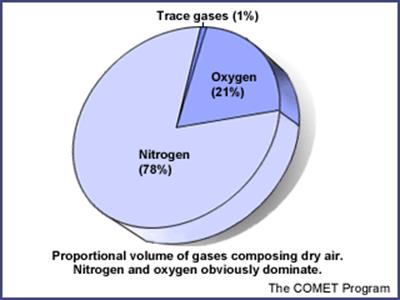
Oxygen
is
found in the atmosphere at a stable concentration of approximately 21%. Because
it is a very reactive element, it can quickly combine with other elements and
disappear from the atmosphere. Yet it persists, and in high concentration. The
cycling of oxygen through photosynthesis and respiration accounts for its
presence and stability. A world without cycles, without life, would retain
little if any oxygen in its atmosphere.
Oxygen does more, however, than simply move between organisms and the atmosphere. Some of the atmospheric oxygen () finds itself lofted high into the upper reaches of the atmosphere called the stratosphere. There, in a series of reactions powered by solar radiation, it is converted into a new compound, ozone (). The presence of stratospheric ozone benefits us creatures of the biosphere tremendously! Ozone serves to absorb biologically damaging ultraviolet (UV) radiation from the sun. Without an ozone layer, the earth's surface would be bathed in high intensity UV radiation; with an ozone layer, the amount of UV radiation received at the surface is vanishingly small. Eventually, each ozone molecule will come apart, reform, and may either be carried elsewhere in the atmosphere or may take part again in the ozone-forming reactions. Over hundreds of millions of years (at least), these ozone-forming and destroying reactions have generally been in equilibrium, forming a balanced - cycle within the greater cycle of atmospheric oxygen.
The Atmosphere in Dynamic Equilibrium
Oxygen
and nitrogen are not the only elements that cycle through the biosphere. Most
of the elements critical to life constantly cycle. This is why earth's
atmosphere can be described as being in a state of dynamic equilibrium. Things are constantly moving and
changing—substances enter and leave the atmosphere, forming different compounds
at different times and in different places.
On
earth, the dynamic equilibrium changes with season. For example, in the spring
and summer, growing plants take carbon from the soil and atmosphere. In the
fall and winter, plants release carbon to the soil and the atmosphere. Because
most of the plant life on earth is found in the Northern Hemisphere, there are
global seasonal changes of carbon dioxide in the atmosphere. An atmosphere in static equilibrium (like that of Mars)
indicates a dead world. All the reactions have taken place and the elements
have found their most stable chemical form. The atmosphere of a living planet,
like ours, is quite different. Unstable, interesting, and improbable reactions
happen all the time, thanks to cycles!
Atmospheric Processes
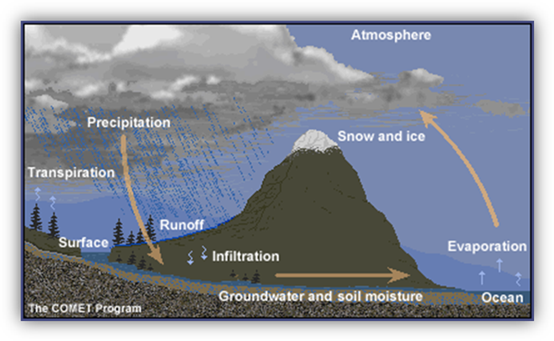
Interactions - Atmosphere and Ocean
Water
is an essential part of the earth's system. Oceans cover nearly three-quarters
of the earth's surface and play an important role in exchanging and
transporting heat and moisture in the atmosphere.
●
Most water vapor in the atmosphere comes
from oceans.
●
Most precipitation falling over land finds
its way back to oceans.
●
About two-thirds of precipitation returns
to the atmosphere via the water cycle.
●
You may have figured out by now that the
oceans and atmosphere interact extensively. Oceans not only act as an abundant
moisture source for the atmosphere but also as a heat source and sink
(storage).
The
exchange of heat and moisture has profound effects on atmospheric processes
near and over the oceans. Ocean currents
play a significant role in transferring heat pole ward. Major currents, such as
the northward flowing Gulf Stream, transport tremendous amounts of heat pole
ward and contribute to the development of many types of weather phenomena. They
also warm the climate of nearby locations. Conversely, cold southward flowing
currents, such as the California current, cool the climate of nearby locations.
Energy Heat Transfer
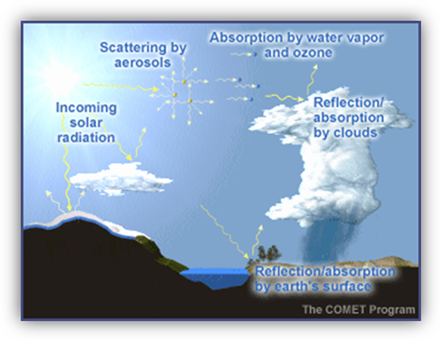
Practically all of the energy that reaches the earth
comes from the sun. Intercepted first by the atmosphere, a small part is
directly absorbed, particularly by certain gases such as ozone and water vapor.
Some energy is also reflected back to space by clouds and the earth's surface.
Conduction
is the process by which heat energy is transmitted through contact with
neighboring molecules.
Some solids, such as metals, are good conductors of
heat while others, such as wood, are poor conductors. Air and water are
relatively poor conductors.
Since air is a poor conductor, most energy transfer by
conduction occurs right at the earth's surface. At night, the ground cools and
the cold ground conducts heat away from the adjacent air. During the day, solar
radiation heats the ground, which heats the air next to it by conduction.
Convection
transmits heat by transporting groups of molecules from place to place within a
substance. Convection occurs in fluids such as water and air, which move
freely.
In the atmosphere, convection includes large- and
small-scale rising and sinking of air masses and smaller air parcels. These
vertical motions effectively distribute heat and moisture throughout the
atmospheric column and contribute to cloud and storm development (where rising
motion occurs) and dissipation (where sinking motion occurs).
To understand the convection cells that distribute
heat over the whole earth, let's consider a simplified, smooth earth with no
land/sea interactions and a slow rotation. Under these conditions, the equator
is warmed by the sun more than the poles. The warm, light air at the equator
rises and spreads northward and southward, and the cool dense air at the poles
sinks and spreads toward the equator. As a result, two convection cells are
formed.
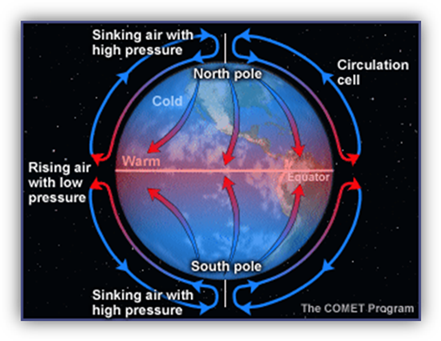
Meanwhile, the slow rotation of the earth toward the
east causes the air to be deflected toward the right in the northern hemisphere
and toward the left in the southern hemisphere. This deflection of the wind by
the earth's rotation is known as the Coriolis
Effect.
Radiation
is the transfer of heat energy without the involvement of a physical substance
in the transmission. Radiation can transmit heat through a vacuum.
Energy travels from the sun to the earth by means of
electromagnetic waves. The shorter the wavelength, the higher the energy
associated with it. This is demonstrated in the animation below. As the drill's
revolutions per minute (RPMs) increase, the number of waves generated on the
string increases, as does the oscillation rate. The same principle applies to
electromagnetic waves from the sun, where shorter wavelength radiation has
higher energy than longer wavelength radiation.
Most of the sun's radiant energy is concentrated in
the visible and near-visible portions of the spectrum. Shorter-than-visible
wavelengths account for a small percentage of the total but are extremely
important because they have much higher energy. These are known as ultraviolet wavelengths.
Another cycle that affects Earth yet is outside the
atmosphere, is the phases of the moon.
It takes 29 days for the moon to travel around the Earth. During this time we see different shapes on
the moon. The light we are seeing is
actually reflected sunlight. The lit
part of the moon always points the way to the sun. There are 8 major stages in
the phases of the moon. Phase changes
depend on the position of the sun and the moon with Earth.
|
Phase 1: The New
Moon |
|
Description |
|
The
first phase is the New Moon. All you
can see is a dark circle in the sky.
This occurs when the moon is between the Earth and the sun. |
|
Diagram |
|
|
|
What we see on
Earth |
|
|
|
Phase 2: Waxing
Crescent |
|
Description |
|
The
second phase is called a Waxing Crescent and it has the shape of a crescent
and it has the term waxing in
front because the amount of light is increasing. |
|
Diagram |
|
|
|
What we see on
Earth |
|
|
|
Phase 3: First
Quarter Moon |
|
Description |
|
The
third phase in called the First Quart Moon.
It is called this because the moon has traveled a quarter of the way
around the Earth. Half of the moon
will be illuminated. |
|
Diagram |
|
|
|
What we see on
Earth |
|
|
|
Phase 4: Waxing
Gibbous |
|
Description |
|
The
amount of light reflecting from the moon is still increasing, so the next
phase in called a Waxing Gibbous. The
moon will appear to be more than half way lilt. |
|
Diagram |
|
|
|
What we see on
Earth |
|
|
|
Phase 5: The
Full Moon |
|
Description |
|
The
fifth phase is the Full Moon. The
entire side of the moon facing Earth is illuminated. The moon has traveled half way around the
Earth. |
|
Diagram |
|
|
|
What we see on
Earth |
|
|
|
Phase 6: Waning
Gibbous |
|
Description |
|
Now
the amount of lighted reflected from the moon is waning or decreasing. The next moon phase is called a Waning
Gibbous. The moon is getting darker
but more than half is still lit. |
|
Diagram |
|
|
|
What we see on
Earth |
|
|
|
Phase 7: The
Last Quarter Moon |
|
Description |
|
The
seventh phase is the Last Quarter. The
moon has one quarter or 1/4th of the way left to travel around the
Earth. The moon appears to half lift. |
|
Diagram |
|
|
|
What we see on
Earth |
|
|
|
Phase 8: Waning
Crescent |
|
Description |
|
The
final phase is the Waning Crescent. A very little portion of the moon is lit.
The amount of light is still decreasing. |
|
Diagram |
|
|
|
What we see on
Earth |
|
|
Then
the cycle continues and after the Waning Crescent comes the New Moon and so on.

Some times when everything lines up just right we get eclipses. Lunar eclipses happen when the Earth’s shadow
is casted on the moon. This will happen
when the Earth is between the moon and the sun.
The moon’s shadow is casted on Earth during a solar eclipse. This will
happen when the moon is between the sun and Earth. Now why don’t we have a
lunar eclipse every month on the Full Moon or a solar eclipse every New Moon. Notice
in the definition of a Lunar eclipse it said, the Earth’s shadow has to be on the moon, to be even more specific it has to be
in the darkest part of the shadow the umbra. The lighter part is called the
penumbra. This is also the case for
solar eclipses. The Earth and moon have different orbits or paths they
follow. The shadows only align in two
places, and because the Earth and the moon are always moving these places will
different. If this these points happen
when the moon is behind the Earth, we will see a lunar eclipse. If the moon is in between the sun and Earth
then we see a solar eclipse. A total
solar eclipse happens when the moon completely covers the sun. This happens when the moon is closest to
Earth. Because the moon’s orbit is an
ellipse and not a perfect circle, there are times that the moon is closer. If the moon is farther away we get an annular
eclipse. During an annular eclipse you
can still see the outer edges of the sun. Any type of solar eclipse can only been seen
at a specific place on Earth. Lunar
eclipses can be seen whatever place on the planet that is experiencing
night. Lunar eclipses are more common than solar
eclipses and last longer.
|
Eclipses |
|
|
|
Lunar |
|
|
|
Total Solar |
|
|
|
Annular Solar |
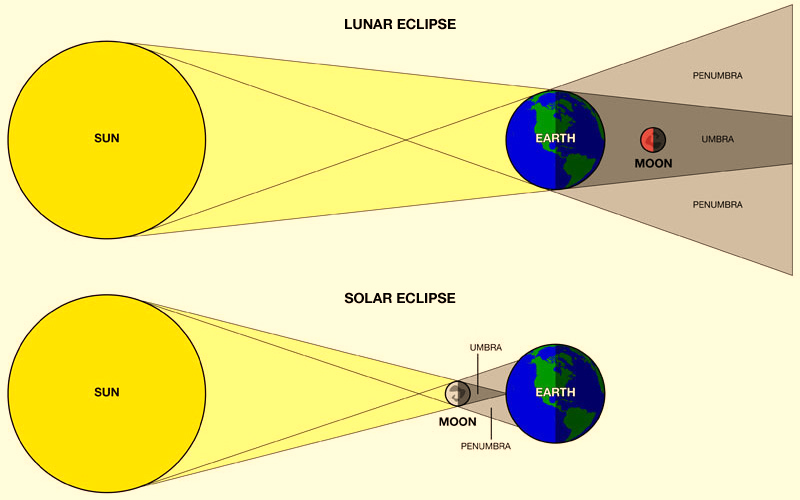
Lunar
Eclipse Phases
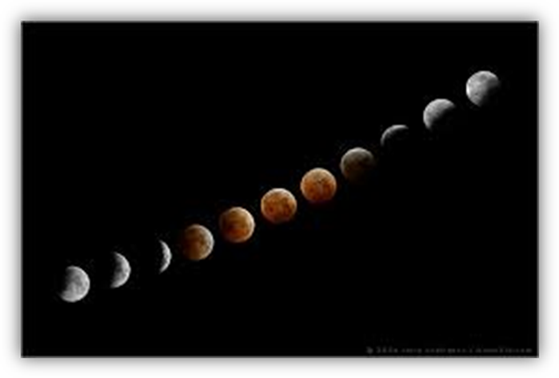
Solar
Eclipse Phases
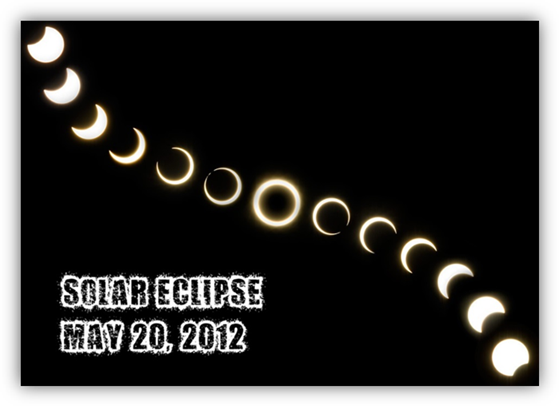
As the moon travels around the Earth, we do not just
experience different moon phases or eclipse. The moon has a gravitational pull
on Earth. It is not great enough to affect
the lithosphere, but it does affect the oceans. Have you ever been to the beach
in the morning then come back later to find the water is lower on the beach? This
is the moon’s doing. The moon is
responsible for tides. There are two high tides and two low tides every
day. During high tide the water level is
higher up on the shore than the low tide. How much water and how much higher on
shore the water level is depends on the type of coast line. High tides occur nearest and farthest away
from the moon. Look at the picture
below, the blue oval represents the gravitational pull on the ocean. The spots closed to the moon received the
greatest amount of pull and on the opposite side of Earth the oceans get much
less gradational pull. That is why you
see two ocean bulges; these are where the high tides are occurring at. The low
tides are an effect of the ocean being pulled in the other directions. The Earth is rotating and the moon is also
moving, so there is a constant change of position. This is why there are two high and two low
tides every day.
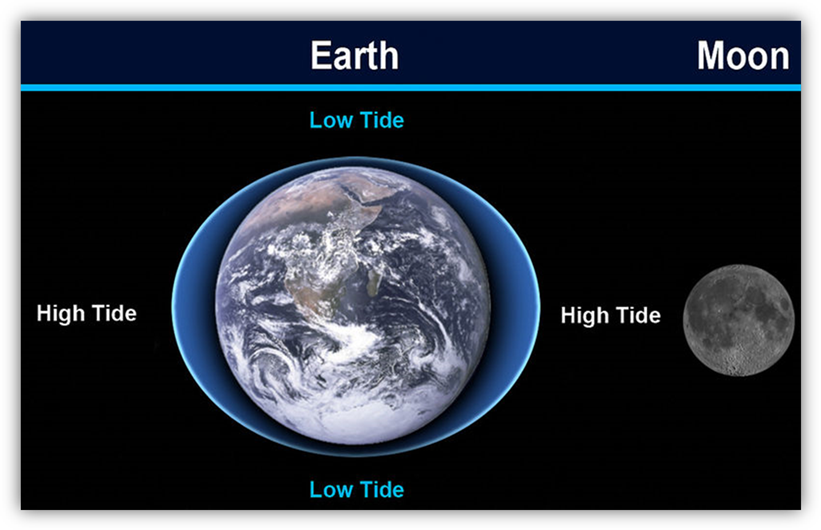
Do
high tide bulges stay exactly with the moon? Click the video link to find out.
There are different types of tides. Neap tides occur at the First and Last
Quarter moons. If you look at both of
those moons’ diagrams above you will notice that the sun, Earth, and Moon form
a right angle. The difference between low and high hide are small because the
gravitational force of the sun and the moon almost cancel each other out.
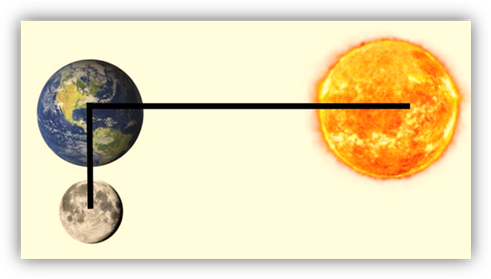
Spring Tides occur at New and Full moons. This means the sun, Earth, and moon are all
aligned. The tides rise higher and falls
lower during these phases because both the sun’s and moon’s gravity
contribute.
